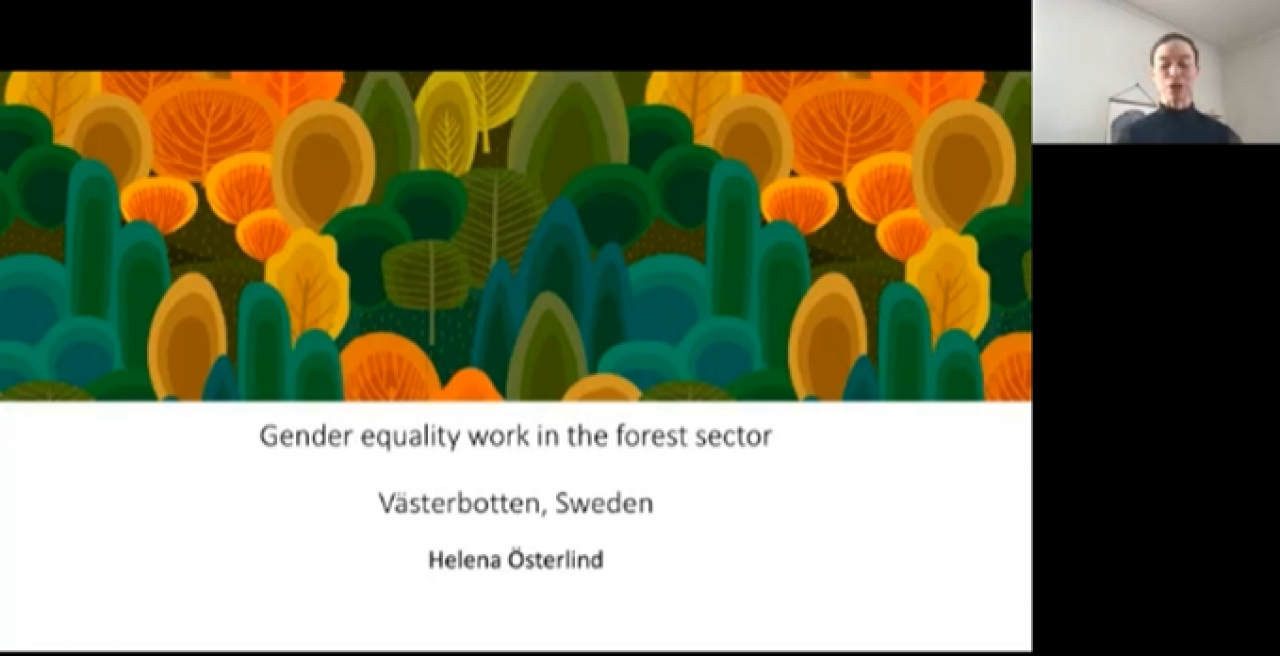
The third and final speaker at the Labour market segregation-themed March master class was consultant Helena Österlind whose presentation allowed us to dig deeper into labour market segregation and gender equality work within the forestry sector in Sweden.
In today’s society and throughout history gender stereotypes have been present within the forestry industry. Men are associated with the traditional norms of machines, production and conventional core businesses within the forestry sector. Women within the industry on the other hand are associated with nature conservation, climate, communication, relations and supporting functions. The key to achieving change is not as simple as just increasing the number of women working in the forestry industry. There is a need for reconsideration and reflection on concepts like competence, core business and competitiveness.
The goal of the Swedish national policy for gender equality is that women and men should have equal power to shape society and their own lives. Although both women and men formally have the same opportunity to educate themselves to work in the forestry industry, only 15% of the workforce are women. This disparity is even wider in many other EU-countries. The question that comes to mind is: Why is that, and what factors contribute to these numbers? There are a few different factors that can be of help to answer this question. First of all, when it comes to forest ownership in Sweden, women in general inherit forest, while men buy and tend to have it as their primary work. Men are raised and taught how to farm the forest while women are not which leaves us with different expectations on men and women.
In the region of Västerbotten there has been continuous work since 2009 with gender equality in the forestry industry. An important factor of success has according to Österlind been that they have communicated and worked closely with the forest companies. This type of close communication decreases the risk that companies will dismiss proposals or policies as they might not understand why it would be relevant for them.
Gender equality is essential, there is no question about it. However, gender equality is often seen as a “project” that the companies dig into for a short period of time but then the actual implementation gets lost somewhere along the way. The loss of long-term implementation makes it difficult to evaluate what the “project of gender equality” actually results in. To prevent this from happening it's important to have a process model that is circular, that it goes round and round and never stops. Research needs to be done, we need to comprehend the issues, develop and review the work and then implement and evaluate the results.
Over the years it has been highlighted how gender equality relates to notions of gender as well as notions of organisation. The organization is seen as rational, logical and neutral and gender equality is disconnected from the core business. This is problematic as gender equality remains as a “project” and not something that is valuable for the business itself. This shows that the process and how the industry views gender equality needs to change. Otherwise gender equality will remain a project and business will go on as usual with the absence of gender equality in the everyday activities.
Recommended further reading:
